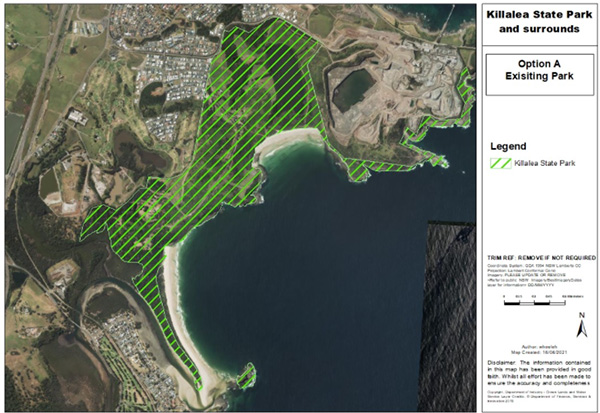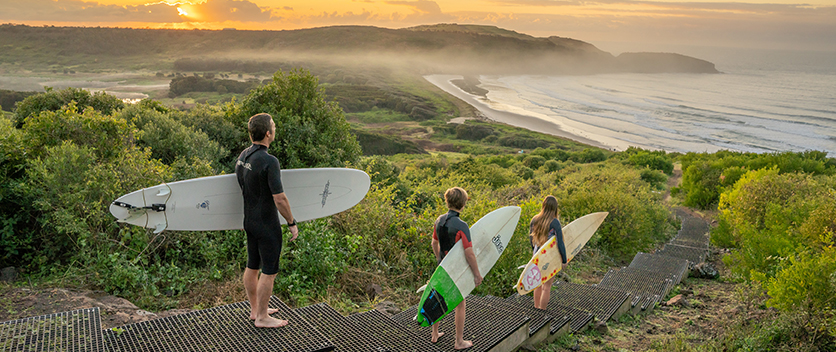Management
The Killalea State Park has been transferred from NSW Crown Holiday Parks Land Manager (Reflections Holiday Parks), to the National Parks and Wildlife Service (NPWS).
This follows a joint decision by Melinda Pavey, former Minister for Water, Property and Housing and Matt Kean, former Minister for Energy and Environment, to vest the Killalea State Park to NPWS.
The Park is now dedicated as a Regional Park protected by National Parks legislation.
Killalea is a well-known and popular tract of coastal land with a range of aesthetic and biodiversity values and has been used as a public recreation reserve for surfing, swimming, diving, fishing, picnics, bushwalking and camping.
Killalea State Park is about 260-hectare in size and is located between Shellharbour and Kiama on the NSW south coast. The Park is a popular tourist location, currently attracting 30,000 visitors per month.
As a Regional Park, Killalea will continue to be treasured, while at the same time its plants and animals will be protected and managed for future generations.
The land was reserved on 1 July 2022 and renamed Killalea Regional Park.

Community and stakeholder engagement
A government inter-agency committee was established to manage the vesting, comprising DPE Crown Lands, NPWS, Department of Regional NSW and local council. Reflections Holiday Parks also contributed to the committee. NPWS will now develop a new Plan of Management for Killalea Regional Park and will seek feedback from nearby residents, Aboriginal groups, Shellharbour and Kiama Councils, the local surfing community and shorebird protection groups.
There are several known Aboriginal sites of significance within the park, and these typically represent middens. The broader area, Bass Point Headland for example, is of significant cultural value.
Local Aboriginal communities have strong cultural connection to the location and visit the park for multiple purposes, including fishing.
Background
Killalea is a popular tract of coastal land that supports a diverse range of vegetation communities including, heath, tall shrubland, littoral rainforest, dry sub-tropical rainforest, coastal dunes, wetland, rocky shores, grassland, mangroves and salt marsh.
This diversity supports nine endangered ecological communities, as well as threatened plant species including Elegant Wax Plant and Illawarra Zieria. It also provides habitat for some 63 native bird species.
The park has been previously managed under 3 government operating models, including:
- National Parks and Wildlife Service.
- Crown Land community trust.
- Crown Land Category 1 manager – Reflections Holiday Parks.
To protect the environment and coastline of Killalea, the freehold land was acquired under the coastal protection lands scheme to create a state recreation area under the National Parks and Wildlife Act 1974.
The southern part of the park was acquired on 5 October 1984, and the northern part of the park was acquired on 12 September 1986 (NSW NPWS 1989) to create the State Recreation Area.
The former State Recreation Area under the National Parks and Wildlife Act 1974 was then dedicated for the purpose of public recreation on 1 June 1997.
The park was then managed by the NSW Department of Land and Water Conservation as a State Park. A community board under the Crown Land Management Act 1989 administered and managed the park (ERM 1989).
Killalea State Park was added to the Reflections’ portfolio, on 28 October 2016.
